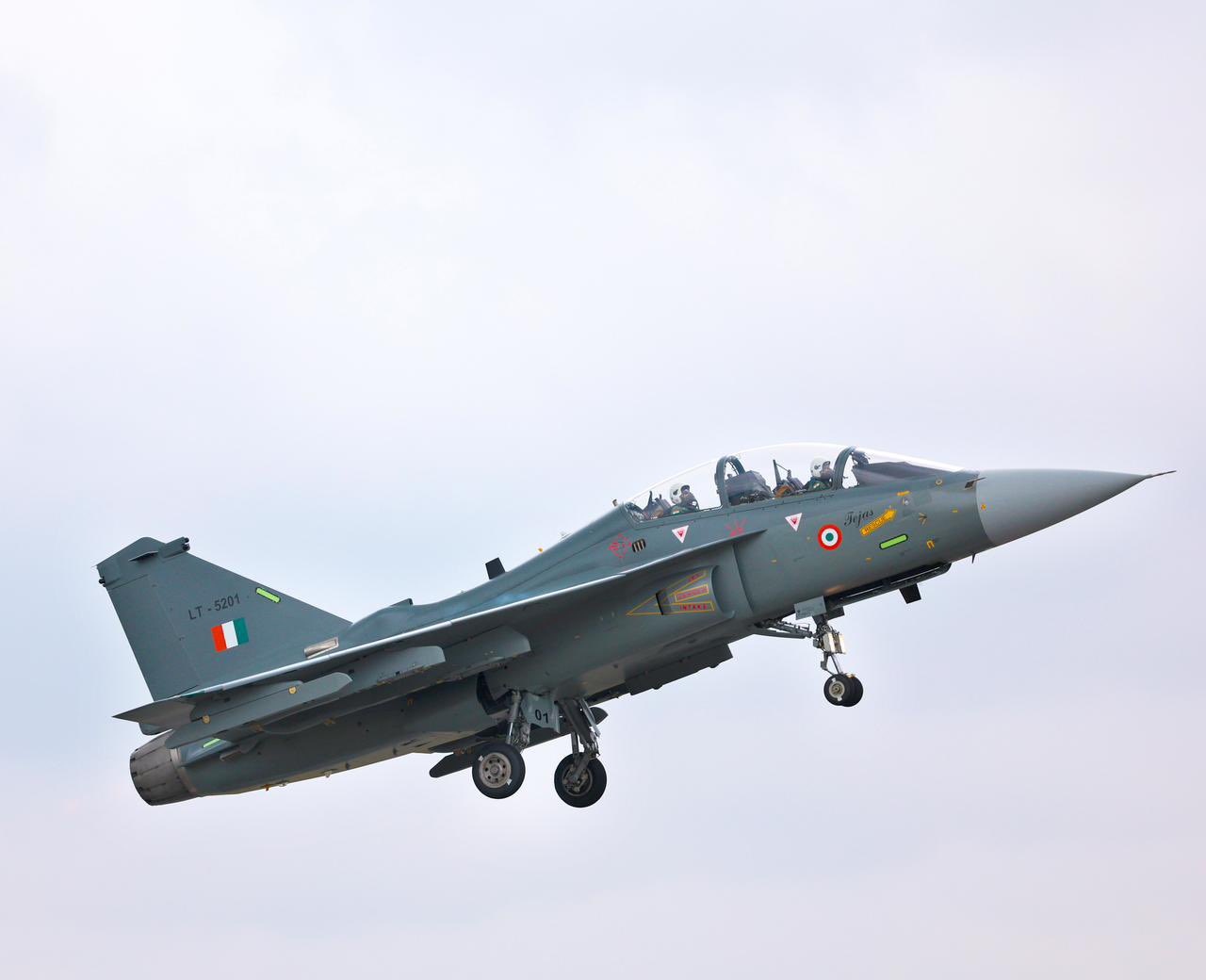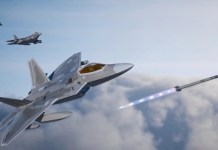Three months after Operation Sindoor, which saw the biggest air battle between India and Pakistan since the 1971 War, both New Delhi and Islamabad are modernizing their Air Forces.
Earlier this week, India’s Cabinet Committee on Security (CCS) cleared the procurement of 97 LCA Tejas Mk 1A for the Indian Air Force (IAF) at the cost of Rs 62,000 crore (USD 7.2 billion).
This is the biggest order so far for India’s indigenously developed light combat aircraft (LCA) and a big boost for India’s ‘Make in India’ program, as well as its aim of achieving complete self-reliance (Atmanirbharta) in defense.
However, contrary to what many people believe, the latest order will not only support India’s domestic defense aviation industry but will also significantly boost the IAF’s capabilities and will prove a ‘Game-Changer’ for the IAF in the long run.
The LCA Tejas Story So Far
While India’s Tejas story started more than four decades ago in the 1980s, the IAF placed its first order for 20 LCA MK1 fighter jets (Initial Operational Clearance (IOC) standard) in March 2006.
This was followed by another order for 20 LCA MK1 fighter jets (Final Operational Clearance (FOC) standard) in 2010.
According to the latest reports, the IAF has already received 38 of these 40 Mk1 fighter jets. The remaining two Mk1 aircraft are the two-seat trainer variants.
As of August 2025, the IAF operates two Tejas Mk1 squadrons (No. 45 “Flying Daggers” and the No. 18 Squadron – ‘The Flying Bullets’ at Sulur AFS).
Subsequently, the IAF placed an order for 83 LCA Tejas MK1A fighter jets for a cost of Rs 48,000 crore in 2021.
Subsequently, in August 2021, the state-owned Hindustan Aeronautics Limited (HAL) placed an order worth Rs 5,375 crore for 99 F404 engines with GE Aerospace to power the indigenously made Tejas Mk-1A.
The delivery for these MK1A variants was to start from February 2024; however, the delay in the delivery of General Electric (GE) F404 engines delayed the program.
As of July 2025, India has received delivery of two GE-F404 engines from the United States. India hopes to receive 12 GE-F404 engines by March 2026.
Twelve Light Combat Aircraft Tejas MK1A variants will be ready to be rolled out by December this year, of which six aircraft have already been lined up, the Indian government officials have said.
To meet production deadlines, the HAL has expanded production capacity with a third line at Nashik (operational by October 2024) and plans for a fourth line to increase output from 24 to 32 aircraft annually.
The HAL hopes to deliver all 180 Tejas MK1A fighter jets (83 + 97) by 2031-2032.
Will Tejas MK1A Be A ‘GameChanger’ For IAF
Firstly, the ten squadrons (180 aircraft) of MK1A fighter jets will help the IAF boost its dwindling squadron strength.
The IAF is operating at its lowest strength of 31 squadrons as against the sanctioned strength of 42 fighter jet squadrons, since the 1962 India-China War.
Further, the IAF will be down to 29 squadrons next month when the IAF’s last two squadrons of MiG-21 Bisons retire in September 2025.
Secondly, the IAF will be able to add these fighter jet squadrons at a much lower price.
It is worth noting that just four months ago, India placed an order for 26 Rafale M (Marine) fighter jets from France for Rs 63,000 crore (USD 7.3 billion). In comparison, the IAF will get 97 LCA Tejas MK1A fighter jets at a lower price of Rs 62,000 crore or USD 7.2 billion.
Essentially, India is getting nearly four Tejas MK1A fighter jets for the price of 1 Rafale M fighter jet. True that Rafale M is carrier-capable and twin-engine, whereas Tejas MK1A is only a single-engine light combat aircraft; however, they’re both 4.5-generation aircraft, and India is getting nearly four MK1A fighter jets for the price of one Rafale M.

Domestic manufacturing of these aircraft will also support thousands of jobs and will not put additional strain on India’s foreign currency reserves.
However, the benefits are not just economical, but also in terms of capability addition.
The MK1A will be a stepping stone and a crucial learning process for the HAL to advance to the Tejas MK2 variant, as well as to India’s own fifth-generation AMCA fighter jet.
Notably, while the MK1 variant had nearly 50% indigenous content, the MK1A variant will have 60-65% indigenous content, and the MK2 variant will aim for 70-90% indigenous content.
The large 180 aircraft order for MK1A fighter jets will give confidence to HAL in its own design and production capabilities.
Furthermore, as HAL expands its production capabilities and as MK1A variants start participating in foreign exercises, India could also win export orders for Tejas. This will also boost India’s geopolitical standing.
Purely in terms of capabilities as well, MK1A is a force to be reckoned with. It will be equipped with an Active Electronically Scanned Array (AESA) radar, initially the Israeli EL/M-2052, with plans to integrate the indigenous Uttam AESA radar starting from the 41st aircraft.
The AESA radar offers superior detection capabilities, increased tracking range (over 200 km), multi-target tracking (up to 50 targets), and resistance to jamming, providing enhanced situational awareness.
The MK1A will also feature a Unified Electronic Warfare Suite (UEWS) with a Radar Warning Receiver (RWR), an Advanced Self-Protection Jammer (ASPJ) pod, and advanced electronic countermeasures (ECM). These systems protect the aircraft from ground-based and airborne radar threats, enhancing survivability in hostile environments.
The MK1A will feature nine hardpoints capable of carrying advanced weaponry, including Astra Mk-1 (80–110 km range) and Astra Mk-II (160+ km range) Beyond Visual Range (BVR) air-to-air missiles, Advanced Short Range Air-to-Air Missiles (ASRAAM), and Air-to-ground missiles and precision-guided munitions.
The Mk1A will also be equipped with a mid-air refueling probe, significantly extending its operational range and mission endurance. It also features an upgraded Digital Fly-by-Wire Flight Control Computer (DFCC Mk1A) for improved maneuverability and stability.
Most importantly, since Tejas is an indigenous platform, the IAF will be able to customize it as per its operational requirements. The IAF does not have this freedom with any other aircraft.
Even though the Su-30 MKI has several India-specific customizations, including in its radar and weapons, for instance, the integration with BrahMos AAM and Astra AAM, Tejas will be the first aircraft that India will be able to customize with complete freedom.
Hellfire On Wheels! Taiwan Adopts Ukraine’s “Brimstone Model” With Truck-Launched Hellfire Missiles
With time, India will be able to integrate more and more domestically developed systems into the aircraft. A case in point is HAL’s plans to integrate indigenous UTTAM AESA radar in MK1A variants.
Furthermore, India could also integrate classified weapon systems into Tejas. By contrast, imported aircraft come with weapons whose capabilities are already well known even to your adversaries.
In the future, India could design certain AAM with classified capabilities that could take an adversary by surprise during a conflict situation.
Also, HAL could design and improve the later models of MK1A or the MK2 variant based on the feedback given by the IAF.
The learning HAL will gain from the MK1A and MK2 fighter jets will directly feed into the AMCA program.
And, last but not least, India will not really be impacted by any arms embargoes imposed by any country if India has indigenous weapon systems.
The last year has shown how quickly geopolitics can change, and how swiftly friends can become foes. The only reason Russia could continue its war in Ukraine for three years despite crippling sanctions was that Russia is self-reliant in defense.
Only a country that is completely self-reliant in defense could be truly sovereign.
- Sumit Ahlawat has over a decade of experience in news media. He has worked with Press Trust of India, Times Now, Zee News, Economic Times, and Microsoft News. He holds a Master’s Degree in International Media and Modern History from the University of Sheffield, UK.
- VIEWS PERSONAL OF THE AUTHOR.
- He can be reached at ahlawat.sumit85 (at) gmail.com




